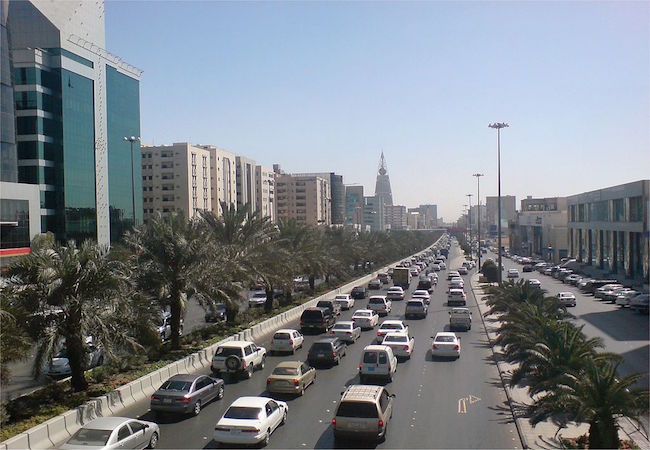KSA’s quest to acquire nuclear energy and implications for the region

By Shahzadi Tooba Hussain Syed
Saudi Arabia officially started looking into nuclear power in 2006. Along with the other members of the Gulf Cooperation Council (GCC) – Kuwait, Bahrain, the United Arab Emirates, Qatar and Oman – the oil-rich nation led an investigation into the possibility of a nuclear power and desalination program.
Saudi Arabia is the world’s largest producer of desalinated water, pumping out more than 3 million cubic meters of potable water each day. According to a report by MIT Technology Review, the country uses 1.5 million barrels of oil per day on water desalination. According to the World Nuclear Association, Saudi Arabia plans on building 16 nuclear power reactors over the next 20 years, with the first scheduled to come on line in 2022. The rapidly-industrializing desert country’s rising population is creating an “insatiable demand for energy because all the water comes from desalination, and the desalination plants are huge consumers of electricity.”
United Nations officials and nuclear arms analysts said the Saudi review reflected profound insecurities generated by the volatility in the Middle East, Riyadh’s estrangement with Washington and the weakening of its reliance on the US nuclear umbrella.
Three options are considered why Saudi Arabia wanted to acquire the nuclear technology or how to tackle the situation in Middle East:
- To acquire a nuclear capability as a deterrent.
- To maintain or enter into an alliance with an existing nuclear power that would offer protection.
- To try to reach a regional agreement on having a nuclear-free Middle East.
The Saudis have a problem with energy security. Electricity needs have skyrocketed because of a combination of rising consumer and industrial demand and the country’s increasing need for energy-guzzling water desalination.
Energy-intensive industrial development puts another strain on energy resources. Part of the country’s growth—GDP rose by more than 4 percent in 2014—has come from the expansion of manufacturing activities. The Kingdom had more than 32 times as many factories in 2013 as in 1974, and its industrial spending over the same time period increased by 750 percent.
Another push of increasing demand is fresh water, which comes from desalination plants that require their own power stations. Desalination is more common in Saudi Arabia than in any other country in the region, providing 70 percent of the water used by Saudi cities. It is the country’s only large-scale option: There are no permanent bodies of water in the country’s interior and very little rain.
Although Saudi Arabia has a vast stock of hydrocarbons, the Saudis cannot simply satiate their energy demand with them, at least not for long. In theory, Saudi Arabia could burn its supplies and hope more are found. To a certain extent, this is the status quo; the country uses more than one fourth of its crude oil production domestically each year. But that strategy doesn’t make economic sense.
Saudi Arabia relies on energy exports for 90 percent of its government revenue. Because Riyadh can get more for its oil abroad than at home, it shouldn’t, and is trying not to, use fossil fuels domestically. With rising energy demand, energy diversity has become an ever-greater national priority.
There are challenges to have nuclear energy but Saudis have also worked it out.
- It’s expensive (costing $4 billion to $10 billion per reactor) but Saudi Arabia isn’t just oil rich, it’s cash rich.
- Nuclear waste poses a technical challenge, but Saudi Arabia has tentatively identified suitable sites for disposal.
- There is also the risk of meltdowns or terrorism, but the Saudis have staffed the King Abdullah City for Atomic and Renewable Energy, an entire city dedicated to the cause, with qualified scientists and researchers working to reduce risks.
The key question stands: would Saudi Arabia use this nuclear energy technology to build nuclear weapons technology?
First and foremost Saudi worries about an Iranian program and to the absence of any international pressure on Israel, which has an estimated 200 nuclear devices. But the fact that it is prepared to contemplate the nuclear option.
Despite some chest-thumping, there is reason to believe Saudi Arabia wouldn’t acquire the weapons. Saudi Arabia has signed a memorandum of understanding with the United States and committed to nonproliferation projects including the Proliferation Security Initiative, the Global Initiative to Combat Nuclear Terrorism, and the Nuclear Non-Proliferation Treaty. There is no hard evidence that the country is setting itself up for a military nuclear program.
Saudi Arabia doesn’t even plan to have its full fleet of reactors operational until 2040, and its first reactor won’t be online until 2022. That timeline leaves it decidedly behind Iran and makes a severe dent in any intentions the country might have to capitalize on the dual-use nature of nuclear energy technology. If the Saudis really want to go nuclear, they ought to speed up their first stages.
Essentially, Saudi Arabia is looking to diversify its energy mix so that it can devote more oil to exports. In fact, the Kingdom is so keen on saving its oil for export purposes that its goal is to generate almost half of its energy from renewable fuels by 2020. To maintain or enter into an alliance with an existing nuclear power that would offer protection is another option to come under nuclear umbrella of USA or Pakistan. To counter the deteriorated situation in Middle East, Arab countries urged the International Atomic Energy Authority, the UN nuclear watchdog, to get tough with Israel to let inspectors assess its nuclear program in line with similar pressure on Iran. So the sole purpose of Saudi Arabia to acquire the nuclear energy technology is just for the sake of nuclear energy and for instance it must be.




